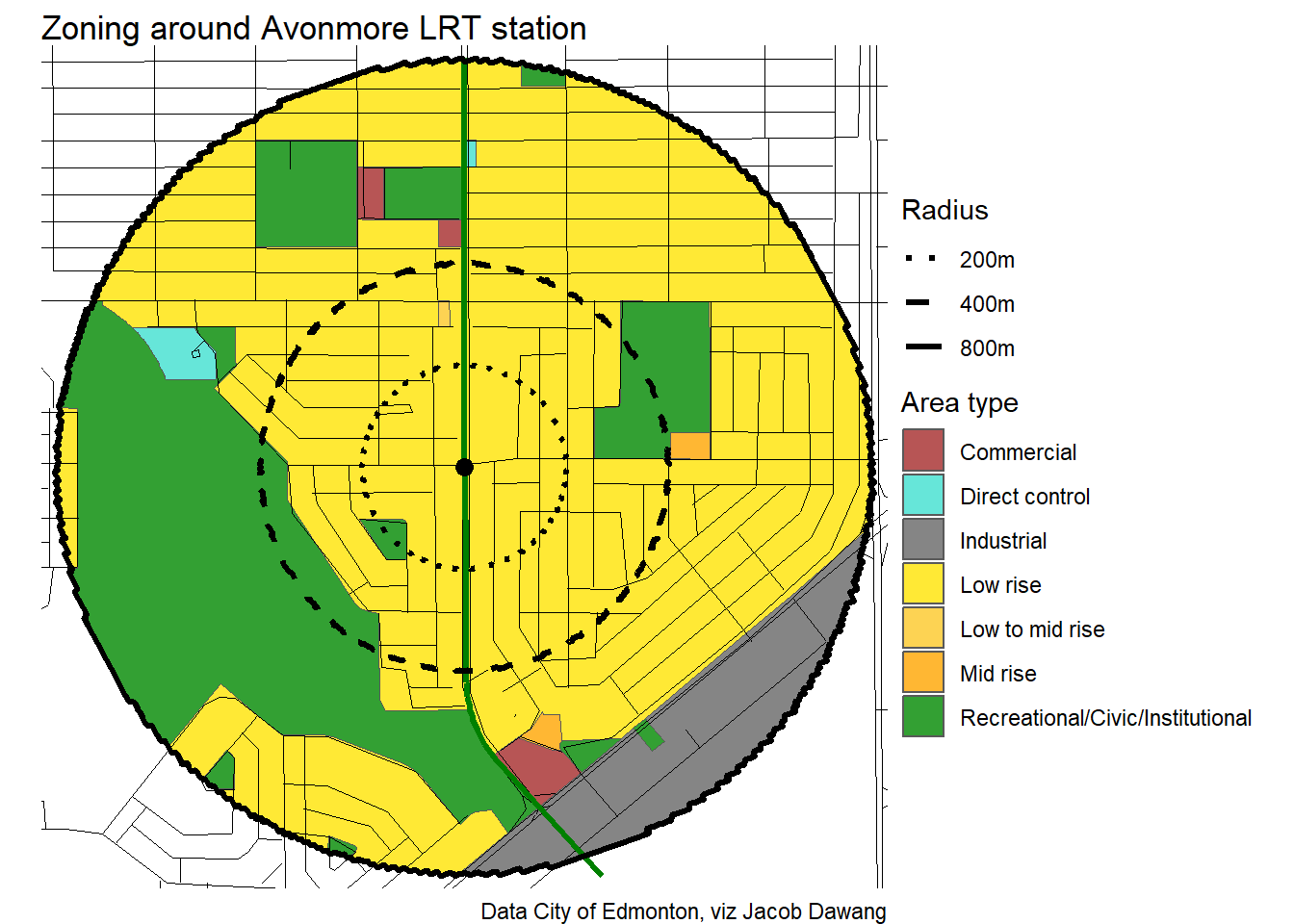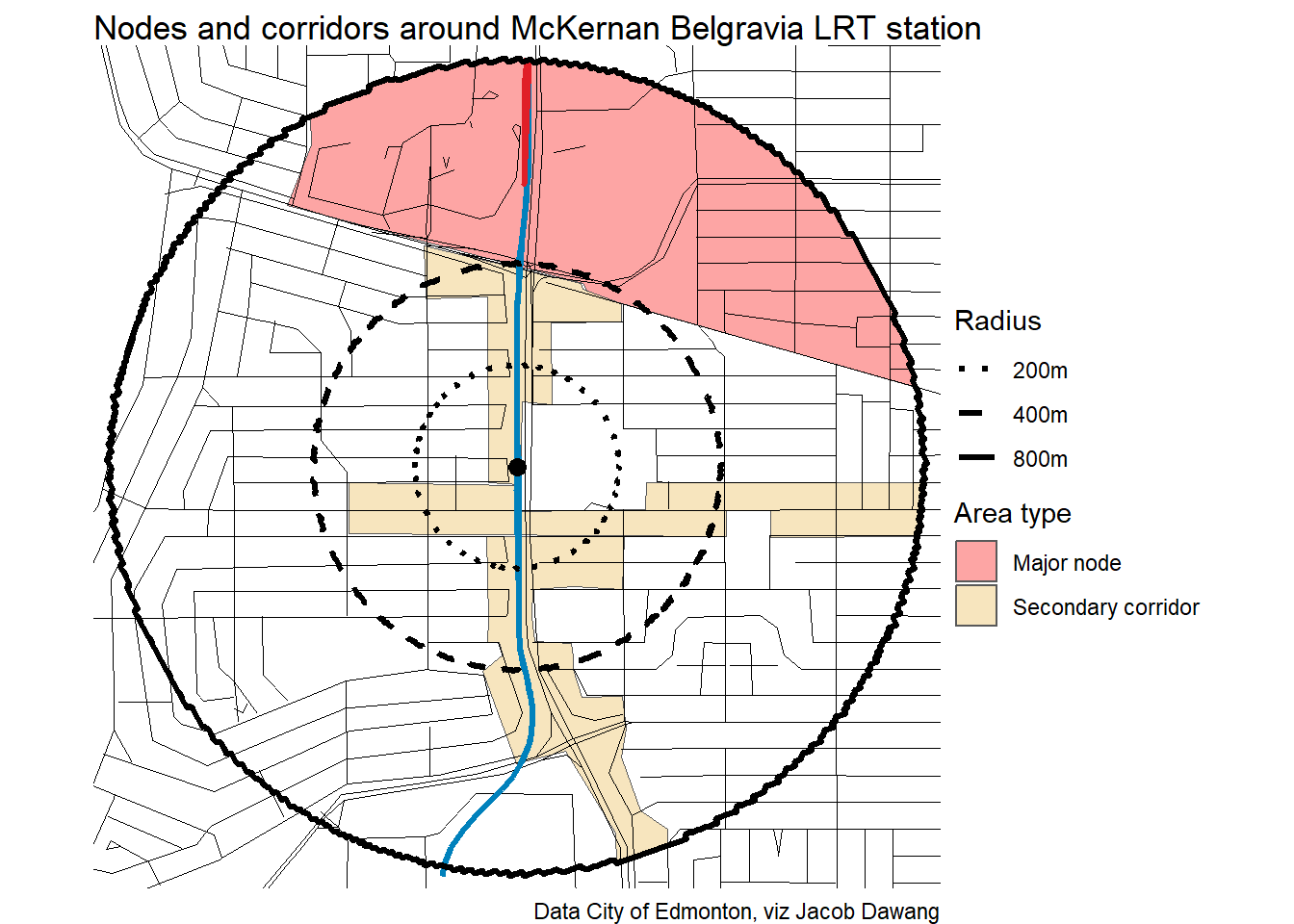
TOD is exactly what it sounds like: building vibrant, walkable communities around public transit. Instead of sprawling suburbs where you need a car for everything, TOD creates dense, mixed-use neighbourhoods where residents can walk to the grocery store, grab a coffee, and hop on the LRT to get to further places. It's about building homes, shops, and offices right where people can easily access transit.
The benefits are clear: reduced car dependency, lower emissions, more affordable housing options, and stronger local businesses. In addition, TOD makes efficient use of the billions of dollars invested by all levels of government. When done right, TOD creates the kind of neighbourhoods where life happens within walking distance.
Unfortunately, Edmonton isn't doing enough to unlock this potential around our existing transit infrastructure. I (Jacob) have documented this challenge extensively, showing how our current district planning limits what can be built near LRT stations. Using district planning maps, I found that stations outside of downtown are generally not covered much by nodes and corridors, the designations that allow for greater density development. Station after station shows the same pattern: much of the land within walking distance is planned for low-density development only.
The McKernan-Belgravia Station area provides a particularly stark example. McKernan-Belgravia is the least used LRT stop on the entire network. My analysis shows that "only 34% of the station area [within a 800m radius] will be covered by the nodes and corridors" under the proposed district plan. When accounting for sites that already have development or are unlikely to redevelop, "only 13% of the station area remains covered by secondary corridors and the major node." This means the vast majority of land around this transit station will remain planned for low-density housing only, limiting the potential for a transit-oriented community to develop.

This represents a massive missed opportunity. Every LRT station should be a hub for housing and commercial activity, but our zoning keeps them surrounded by low density.
Fortunately, some Edmonton city councillors recognize this challenge. Councillor Michael Janz has put forward a proposal to provide tax incentives for transit-oriented development, specifically targeting mid-rise buildings of six storeys or more within 400 metres of transit stations.
Under Janz's proposal, developers who build qualifying mid-rise projects near transit could receive property tax abatements for a period of time. The proposal also considers extending these incentives along future Bus Rapid Transit routes, recognizing that TOD opportunities extend beyond just LRT stations.
This is exactly the kind of forward-thinking policy Edmonton needs. By making transit-oriented development financially attractive, the city can encourage the private sector to invest in the kinds of communities that reduce sprawl and car dependency.
While we applaud Councillor Janz's proposal as an important first step, financial incentives alone won't solve Edmonton's transit-oriented development problem. The fundamental issue isn't that developers don't want to build near transit, it's that our zoning code often makes it illegal to do so.
No matter how attractive the tax incentives, developers can't build six-storey buildings where only low-rise development is planned. That's the reality around most of our LRT stations today. Even with perfect financial incentives, meaningful transit-oriented development will remain impossible until we fix the underlying district planning restrictions.
Other jurisdictions have shown what's possible when governments get serious about transit-oriented development. British Columbia recently implemented legislation requiring municipalities to allow up to 20 storeys within 200 metres of rapid transit stations, 12 storeys within 400 metres, and 8 storeys within 800 metres. This creates a comprehensive framework that ensures housing can actually be built where transit access is best.
Edmonton needs a similar approach. This would create a clear, predictable framework for development while ensuring our transit infrastructure actually serves compact, walkable communities rather than being surrounded by sprawling suburbs.
Councillor Janz's tax incentive proposal deserves support as a valuable tool to encourage development. But Edmonton's leaders need to think bigger. Real transit-oriented development will be unlocked through district planning changesthat makes mid-rise housing legal to build around our transit investments.
The choice is clear: we can continue to have LRT stations surrounded by low-density neighborhoods, or we can create the legal framework for vibrant, walkable communities around transit. Tax incentives can sweeten the deal, but only changes to district planning will make it possible.